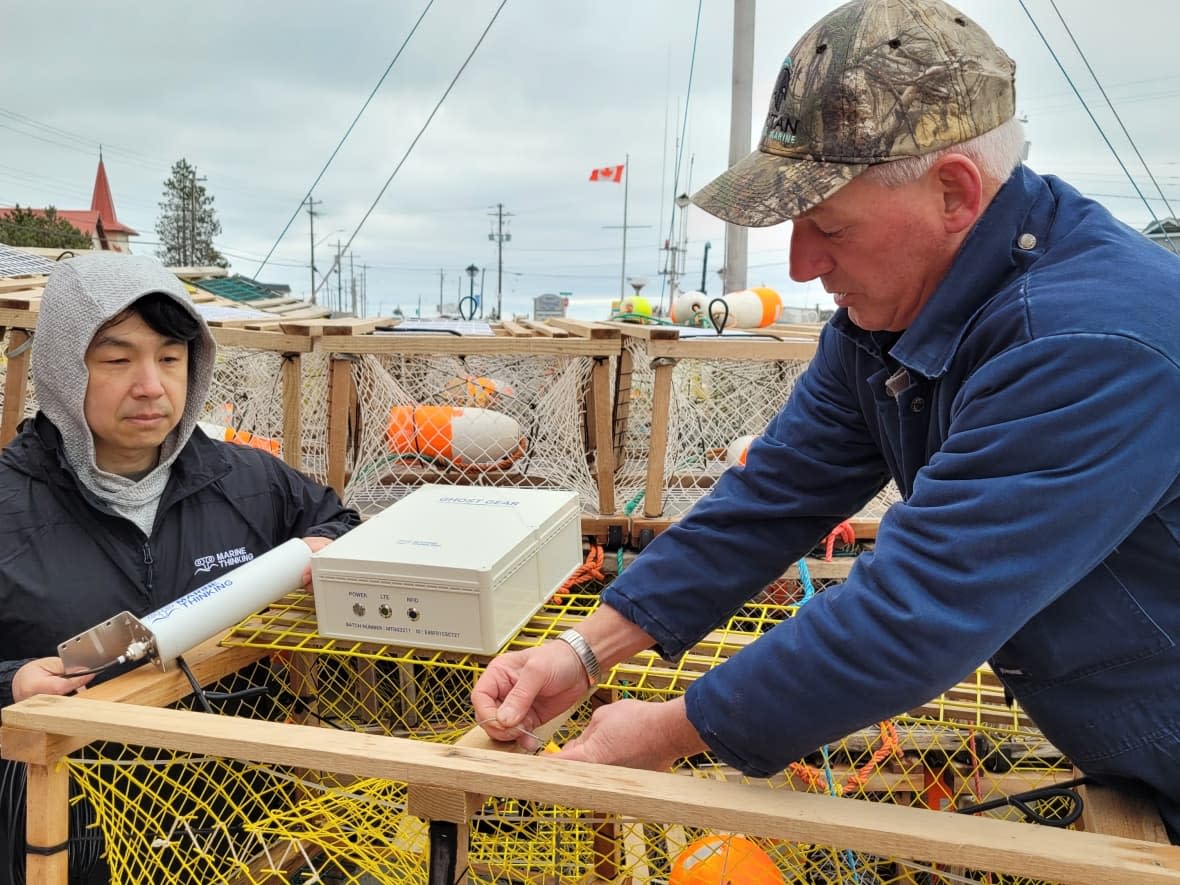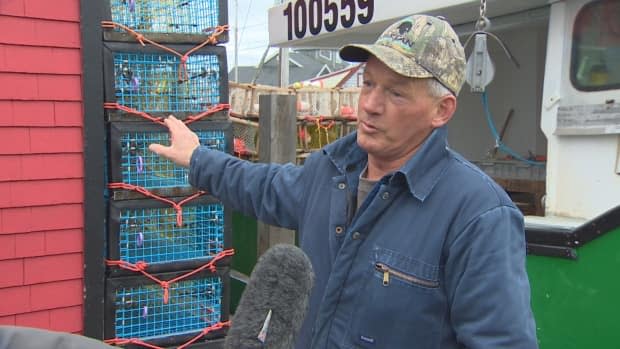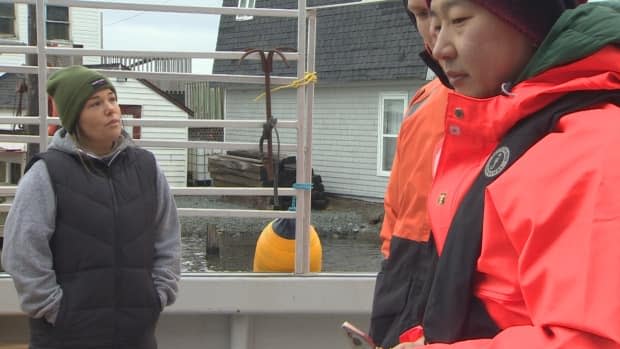Halifax company pilots new technology to track lobster traps

A Halifax startup is testing out new technology aimed at helping the fishing industry recover lost lobster traps and other fishing gear that can be deadly to marine life.
The company, Marine Thinking, has launched a pilot project that involves tagging the traps with high-tech devices. The tags send signals to specially designed consoles on fishing vessels that allow crews to monitor where their equipment is using their phones or other devices.
"Almost every fisherman loses traps in their season, so there is a big economic driver behind it," said Yuan Yao, a product director with the company. "So you can identify them and retrieve them, preventing that loss from happening."
The initiative is receiving $250,000 from Fisheries and Oceans Canada's ghost-gear fund, which supports projects targeting lost or discarded fishing equipment.
It is estimated that between 600,000 and 800,000 metric tonnes of ghost gear goes into the world's oceans every year, the department says. A non-profit group called Coastal Action collected more than 32 tonnes of lost gear on shorelines and in waters around Nova Scotia last year.
When lobster traps and other fishing equipment is lost in the ocean, "it attracts more fish into it and they can't get out, and in turn it attracts more, and it creates this terrible situation," Yao said, adding that ropes and other gear can be a danger to whales.
Financial incentive
The company is testing its equipment with three lobster fishers this season. One of them is 63-year-old Jamie Osborne, from Eastern Passage, N.S, who has fished lobster for 40 years.
A big reason he's interested in the technology is because of the financial hit he takes when he loses traps.
"Well if it will help me find my gear — because they're expensive to buy, like they're $300 a trap, that's what they cost — and if this will help me retrieve it, I'm all for it," he said.

Osborne also makes wooden traps himself, but they still cost around $60 in materials.
"I've lost as high as 12 or 15 in a season but last season was good. I only lost five, I think," he said. "Other fishing boats will run across the line or the buoy and it gets around their prop and cuts it off, so then it's gone. You can't get it. So that's how we lose 99 per cent of ours."
All lost gear must be reported to Fisheries and Oceans Canada, which adds additional work for the crew.
Hopes for sustainability
Osborne's daughter Ashley has fished with him for the past 12 years. She's keen to see the development of any technology that can help sustain the fishery.
"I want to keep fishing, my children might want to fish. This all impacts it. Small lobsters can crawl into the trap. They will never grow to size, so if they're down there at the bottom they're stuck there and nobody knows," she said.

Fishing crews currently mark where their gear is on GPS systems but Yao explained those systems can have their limitations.
"When you deploy a trap into the water, you record on the GPS. But when a storm situation happens, that trap got moved away so you wouldn't know exactly where it is anymore," he said.
The tagging devices will be able to provide locations that retrieval companies can work with to help recover the gear by sending down divers or remote-controlled underwater vehicles.
The system also automatically digitizes the location information, eliminating the need for fishing crews to manually record GPS locations.
The company says it hopes to market the tags with a price tag of around $40, in order to keep the system economical.
It is also exploring the possibility of recording additional information on the devices, such as ocean temperature or the precise locations of a crew's most productive fishing spots.
The company plans to expand the pilot project to 25 fishing crews next season.
MORE TOP STORIES


